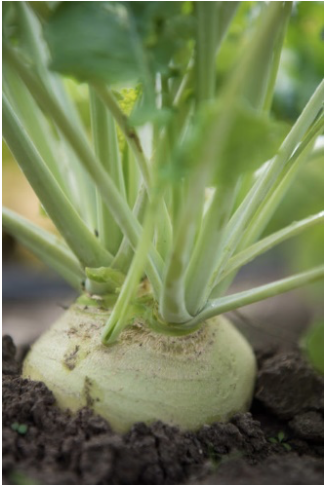Crop: Brassica napus L. var. napobrassica (Swede)
Swede ‘Klint karin’ dates back to the 1940’s. Found spontaneously by a farmer in a field of turnip. Grows well above ground with nice, round shape. Green neck and yellow root (single root on clay soils, may branch on sandy soils). Stores well.
Cultivation System: ND.
Geographical Information
Country: Sweden
The landrace is cultivated in the area of Delsbo. No information is available as regards current growers, either concerning their distribution or their acreages.
Farmer(s) description:
ND.
Propagation system: Seed, cross-pollination
Multiplication procedures and consequences on landrace diversity:Like for any swede, roots are stored during winter and replanted in spring. Care must be taken during flowering to ensure proper distance to other flowering Brassica fields (minimum 2 km).
Management plan existence:‘Klint karin’ was registered 28 November 2018 on the Swedish official list of varieties as a conservation variety. Registration is effective until 31 December 2028. Maintainer: the Swede Academy (Kålrotsakademien).
Added Values
Local and, possibly, regional. Marketed under the trademark Green heritage®.
Others (e.g. commercial/geographical brands or special traits):Chefs have indicated a pronounced interest in swede ‘Klint karin’ due to its storage and gastronomic qualities.
‘Klint karin’ was registered 28 November 2018 on the Swedish official list of varieties as a conservation variety.
The interest among local growers and private gardeners seem to give sufficient support to its long-term conservation and maintenance.
Case study prepared by Swedish Board of Agriculture (SBA), Sweden.
Most of updates have been communicated by Dr Jens Weibull (SBA).
ND.
